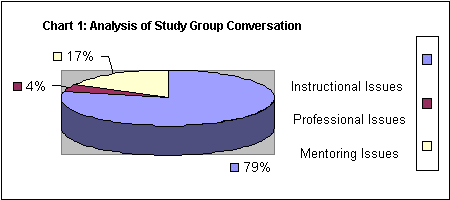by Penny Arnold
1999
New local, state, and national standards reflect high expectations for students. These standards for students imply high standards for teachers. But standards alone are not enough to bring about necessary changes in the quality of teaching and learning. Many, perhaps most, schools are not organized to provide the time, space, equipment, and expertise needed to deliver the high-quality instruction implied by the new standards. Too many teachers are working in isolation, behind the closed doors of their individual classrooms, sequestered by traditional school schedules. Most school schedules allow too few opportunities for teachers to visit other classrooms, observe colleagues in action, or plan and problem-solve with others.
How can we improve the quality of teaching and learning? How will we prepare teachers to help students meet high-stakes standards? For that matter, where will we find enough teachers to fill numerous expected vacancies and how will we get them to stay once we’ve found them? We can start by organizing schools for success. We can build in time for teacher collaboration, structure site-specific professional growth into the school day, and create high-quality, school-based teacher education programs. The recommendations below are based on my action research.
- Schools and school systems must structure time within the school day to allow teachers to work in collegial study groups around classroom instructional issues. These groups could be organized for a task such as the mentoring of new teachers or by academic teaching teams.
- Schools and districts should create opportunities for experienced teachers to participate as supervising teachers as an option for fulfilling professional development requirements. This would promote meaningful, job-embedded professional growth and teacher leadership.
- Teacher Education programs should include collegial study groups for cooperating teachers as well as student teachers. This would create opportunities for meaningful, job-embedded professional growth of experienced teachers and would make Teacher Education programs more beneficial to cooperating schools, teachers, and students.
My own school-based action research looked at what happens to the quality of teaching in classrooms when teachers collaborate as mentors for student teachers and as problem-solving partners with their colleagues. My research suggests that teachers grow professionally and classroom instruction improves when teachers see themselves as responsible, expert mentors. When teachers are given the time to work together, they concentrate on helping one another solve instructional dilemmas and they improve their teaching skills. Teachers who participate in such collaboration gain confidence, feel better prepared and more proficient. Students notice a positive change as well.
In my study, five mentor teachers met together in a study group during the term. Although the focus of the sessions was, ostensibly, the mentoring of student teachers, the overwhelming emphasis when these teachers met together was on improving classroom instruction. They discussed, brainstormed, offered suggestions, and problem-solved together over a wide variety of specific concerns, as they arose in their classrooms. The group provided a forum for professional growth and improved practice (See Chart Below).

In addition to the benefits of collegial work groups, my study suggests that the quality of teaching improves when an experienced teacher assumes the role of mentor with a student teacher. Taking on the role and responsibility of “expert” and having the opportunity to be reflective about the teaching task creates a purposeful focus for professional growth that has an immediate impact on the students in that classroom. When questioned, teachers and students in such classrooms point to specific positive changes as a result of the cooperating teacher/student teacher dynamic. Teachers report renewed confidence, reaffirmation of teaching values, more careful preparation, and refined execution. Students saw the teacher as continuing his/her growth and felt their class had been introduced to new ideas. |